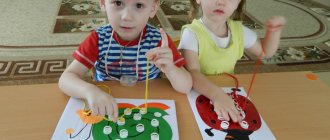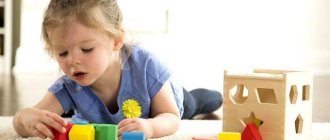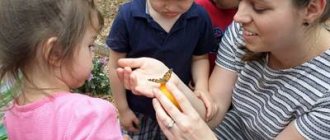What is Gender
This concept denotes a person’s belonging to a certain social gender, which is formed in the process of developing personal qualities, including psychological, social and cultural influence on both boys and girls.
- Gender translated from English means gender, which in turn refers to social sex as a product of culture.
- A gender approach in the educational and educational system is necessary, first of all, so that every child can express his or her identity.
- In a future life, this can determine the choice of profession and fully self-realize.
At the same time, this approach to education will help you get around the “sharp corners” in adult life with minimal losses, thanks to the flexibility shown in your behavior.
Gender education
Each person is born as an individual with his own individual attitudes, which you will not find in anyone else. People may be similar to each other in some ways, but there are no identical personalities.
- The division of people into two groups according to gender (boy and girl) is a central principle for the difference between all surrounding individuals.
- According to research by specialists, all psychological differences between men and women are associated with characteristics of genetics and physiology.
- Nature itself requires the fair half of humanity to be loving and caring wives and mothers.
And from men to be brave, strong and respectful towards all the people around them. Also protect your family and honor family values. This is the main task of gender education.
What is gender role
Every child, closer to 2-3 years old, begins to understand which gender he belongs to. This can be seen primarily in the choice of children's toys. Many studies have shown that boys choose cars, robots, toy weapons, etc. from the proposed items.
And girls opt for dolls, children's jewelry, fairytale castles and other items belonging to this gender category of games.
- Closer to the age of 4-7 years, children understand that their gender will no longer change and begin to behave accordingly, taking into account the behavior of the women and men around them.
- This is the gender role of every person in this life. Therefore, at this stage they are trying to consolidate the gender education of preschoolers, but there are not always conditions for this.
- Indeed, in the modern world one can often observe a picture where a man and a woman have changed places. The female gender has become strong and courageous, and the man shows more qualities of the weaker sex. But there are reasons for this.
For example, a girl was raised by one mother and there was no one to stand up for her, not a man. Therefore, from childhood, a woman took on a masculine character.
Or, on the contrary, the situation with a boy who was raised by his grandmother and mother. And with their best intentions, they protected the boy from all male work and difficulties, thereby compensating for the missing male shoulder.
What is gender education for preschoolers?
The main directions of gender education for preschool children are as follows:
- mastering the accepted female and male roles in society;
- fostering a culture of relationships with both one’s own and the opposite sex;
- mastering skills and abilities to realize one’s gender.
Appropriate gender behavior is manifested primarily in children's games. Girls prefer dolls, distribute the roles of daughter/mother, prepare food, put them to bed, etc. Boys fight with each other, have car races, build towers, and shoot pistols.
At the same time, a girl can be mischievous, too mobile and active. And among boys there are often silent quiet people with a melancholic mindset.
It is necessary to take into account the temperamental characteristics of preschool children, find an individual approach and guide them in gender terms, so that over time they develop gender-specific qualities.
Why does parental overprotection prevent children from developing properly?
Gender education in kindergarten
Every child, closer to three years of age, joins a preschool education team. There he fully begins to realize his belonging to the male or female sex, which was inherent in his home upbringing.
Next comes the work of educators who, through role-playing, seek to consolidate the results for gender education.
The main goal of which is to discover tenderness, meekness and femininity in a girl, and observation and perseverance in a boy.
Particularly good results are obtained from games divided into professional areas, where the future man is exclusively occupied with his duties, not forgetting to show respect and help to the female half. Girls, in turn, are taught the same respect for the masculine gender and the expression of tenderness and femininity.
Methodology
Education of preschoolers occurs according to the following methodology:
- Role-playing games (family, professions);
- Conversations using manuals and visual literature;
- Making cards and crafts for parents and grandparents;
- Reading fairy tales, memorizing poems and sayings.
This specificity bears fruit in education, which can be observed during the adolescence of a teenager. Although there is a “release of hormones”, many actions of a bad character are avoided, thanks to the gender education received earlier.
Formation of gender identity of pupils in preschool settings
Kuzaeva N.A., deputy director;
Evstifeeva E.S., senior teacher of the secondary school "Teremok" GBOU secondary school, p. Isakly Samara region.
The changes taking place in education can be traced at all levels. Preschool education is designed to create conditions for maximum disclosure of the individuality of each child. Gender identity of a preschooler is an individualized process of a child’s awareness of himself as a representative of a certain gender with a set of social behavioral characteristics. Every teacher is interested in consciously regulating the process of gender as a fundamental characteristic of a preschooler, laying and determining the trajectory of personal development.
Gender can manifest itself in different ways, and individual manifestations do not necessarily coincide with the stereotypical (gender-role) ideas of others about the behavior of a girl and a boy.
In the process of forming gender, a kindergarten teacher needs to: - know the gender composition of the group of children; - navigate each age period of the child, taking into account the patterns of gender development; — take into account the gender component of games and toys; — identify differences in the acquisition of knowledge by children with different gender dominants; - navigate the activity preferences of children with different gender types; — create conditions for a positive transmission of their own experience to boys and girls, the optimal choice of forms, methods and means of teaching children of different sexes; - know your own gender type and understand the specifics of your own communication style in accordance with your gender dominance, taking into account your component position in relationships with children of different sexes.
The process of gender formation is realized through the introduction of a gender approach into the preschool education system.
In the process of planning work with children based on a gender approach, the teacher needs to know the gender typology of personality.
The masculine gender type is focused on the authority of strength and independence of behavior, has high individual achievements, prefers male authority, needs male communication, is intolerant of objections, prefers to defend his opinion and take leadership positions, and reproduces an independently competitive style of behavior. Relationships with peers are authoritarian in nature.
The feminine gender type prefers dependent, subordinate behavior, is cautious, does not like to show initiative and independence, deliberately limits its “research space” (especially boys), needs constant moral support from others, and avoids contact with masculine children in play activities; Boys often have communication difficulties.
The androgynous gender type is free from rigid gender typing and traditional norms, is able to realistically comprehend and evaluate situations, overcome difficulties independently, is significantly socially active and outgoing, is able to actively and positively interact with children and adults of any gender, has good organizational skills and constructive personal qualities. character (protection, help), persistent, independent, has a high level of achievement.
The undifferentiated gender type rejects both male and female styles of behavior, is unable to navigate traditional norms of gender-role behavior, is passive, has low real achievements, deliberately avoids contacts, and does not enjoy authority among peers.
Having started work based on a gender approach, we were surprised by the monitoring results: it turns out that in senior preschool age children of the feminine type make up almost 40%, of which boys - 15%, while girls with a masculine (masculine) orientation - almost 25%, and 7% of children can be classified as the undifferentiated type. For comparison, we conducted a diagnostic study in a neighboring kindergarten, where diagnostic results revealed similar trends. We understand that atypical gender characteristics (when a girl behaves like a typical boy and vice versa) require an individual development path in a kindergarten setting. No adult is able to change the characteristics of a child’s gender development, and the manifestation of such individuality is practically the norm. After all, a modern woman today feels comfortable behind the wheel of a car and in the chair of the director of an enterprise, and a modern man can do typically female work, and this no longer surprises anyone.
At the very beginning of the work, teachers identified key concepts: gender approach, gender identity, gender, sex-role approach, socialization of a preschooler, subject-developmental environment, components, principles of constructing a subject-developmental environment, subject-developmental environment based on a gender approach, communicative, gaming, Productive child activities, play. Each teacher first studied these concepts independently, and then at the seminar we summed up the results of this work. Such individual work of teachers was carried out so that each educator and specialist understood the mosaic of the conceptual apparatus.
Working with teachers consisted not only of understanding and studying these terms; in parallel, pedagogical councils, seminars, and workshops were held for a more nuanced study of the range of new concepts and phenomena. Pedagogical councils were held: - “Gender approach in preschool educational institutions” (the goal is to clarify the knowledge of teachers about the principles of a gender approach in education); — “The principle of constructing a subject-developmental environment for preschool educational institutions based on a gender approach” (the goal is to familiarize teachers with the conditions for constructing a subject-developmental environment from the perspective of a gender approach to the educational process in preschool educational institutions).
Thematic seminars and workshops were held: “Planet Gender”, “Spatial-subject component of a subject-development environment based on a gender approach”, “Social component of a subject-development environment based on a gender approach”, etc.
In parallel with this, children of the second younger group were tested to determine the favorite color of each child; this knowledge was necessary for building the organization of a subject-development environment for the next school year. During the summer period, work was done to organize a subject-development environment in the group premises: cosmetic repairs were carried out, the walls of the room were painted in the colors that the children chose from the variety of colors offered to them (light green (quiet zone), pink (girls’ play area ), blue (motor zone), yellow (training zone)).
Furniture was arranged according to the shades of the walls, and toys were placed in play centers.
Modern exemplary basic general education programs for preschool education, which meet the latest requirements of the Russian Ministry of Education and Science, adhere to the principle of comprehensive thematic planning and propose studying one topic with children throughout the week. Recommended topics are implemented in all areas of the teacher’s activity (direct educational activities, routine issues, interaction with the family). By organizing educational activities at scheduled times, the teacher creates conditions for varied and interesting activities for children within the framework of the theme of the week. During the morning reception, you should create a good mood for the child; if it is difficult to choose an activity, help: offer a toy, include the child in a game with playing children. The teacher is obliged to ensure that all children, during routine moments, find interesting activities and do not disturb others. For the feminine group (mostly girls), the teacher selects emotional, bright, colorful material that creates conditions for the use of adjectives, and places the toys close to each other. These children understand and remember well what they can touch with their hands. For the masculine group, the game material should have a slightly aggressive, chaotic appearance and complex design, promoting the development of spatial orientations. These children learn the material better if they show the ability to identify and realize all the properties of an object by subjecting it to various actions with it. The androgynous group copes with game attributes in the form of didactic games, board and printed games, games for the development of fine motor skills. Such children are considered “conditionally gifted,” their cognitive abilities are above average and allow them to solve mental problems in any activity. For children of an undifferentiated group, nursery rhymes, poems, and problematic play situations are needed that show an example of stereotypical male or female behavior.
Gender is revealed in the role-playing game; At the same time, children more often play in same-sex groups, but sometimes differentiated content of the game is observed. In the process of guiding it, the teacher needs to take into account the gender manifestations and preferences of children of different gender groups. For boys and girls of middle and senior preschool age, the distribution of roles in the game is formed according to gender; they do not confuse the gender of the game characters, choosing as their “partner” a child with whom they have developed friendly relations. Children play a gender-neutral role if there are not enough boys for “male” roles or girls for “female” roles, or if girls or boys playing alone are forced to play both roles themselves. Boys fight in wars, drive vehicles, build houses, bridges, cars, and go on trips. Realizing the need to be liked by others and to be beautiful, girls often stage weddings, “get married,” “treat the sick,” etc. When guiding the play of preschoolers, the teacher, knowing these features, creates conditions for the manifestation of each individual’s individuality. For example, if a girl has shown a desire to play the role of a driver, there is no need to prohibit this. The teacher supports and encourages the initiative of each student, regardless of the “typical” nature of the chosen role.
At this stage, the work consists of drawing up both calendar and thematic planning and taking notes of educational activities based on a gender approach.
In conclusion, I would like to say that working with children based on a gender approach is very exciting and produces certain results. Both the children and their parents were satisfied with us. In addition to general interest, the results also show an increase in the creative activity of students. The child understands his gender identity and knows his interests: “I’m a girl, but I like to play railroad with boys and I want to become a railroad worker!”
Games, toys, activities - everything is interesting and varied not only for everyone, but for everyone.
We are working in this direction, but we can already identify several difficulties: self-training of educators on this topic is necessary. Teachers are not familiar with gender issues regarding preschool children; neither secondary nor higher pedagogical preschool education introduces students to this topic. It is difficult to organize and provide theoretical study of problems in conditions of intensive work of teachers. The changing composition of children in groups also makes work difficult. Some children move to correctional groups, and new pupils had to be re-diagnosed and gender characteristics identified. In this regard, the work was slightly suspended until the desired result was achieved with the new children.
We advise all colleagues, when working in general education groups, to study the gender approach and typology before outlining a plan for educational work. This helps to find an individual approach to each child, help cope with difficulties, and adjust the personal development of each student.
The nuances of raising girls and boys
Themes of gender education have always been the main issue that the church dealt with until the 20th century, dictating conditions for the behavior of men and women. In modern life, issues of education are dealt with by both the family and educational institutions, which may relate to general education or a religious bias.
At the same time, the gender education of boys and girls differs significantly.
It is recommended to raise the male half as follows:
- For a boy, love is trust. He will feel confident if he is loved;
- An example for a boy should be a father, uncle, grandfather, coach, but with good upbringing traits;
- Maintaining discipline. This will help develop responsibility;
- You can't stop a child from crying. The will to emotions is important for every person;
- Building a trusting relationship with the child;
- Learning the basics of cooking and cleaning;
- Have games for boys that will contribute to further development.
Gender education plan for girls:
- Showing care and love for the child;
- Close connection with mother;
- Respect and love from dad;
- Teaching the basics of cleaning and cooking;
- Pride in your child;
- Providing girls with toys specific to their needs;
- Development of motor skills.
The most important thing that is emphasized in gender education is the manifestation of love and respect for children. And love, as they say, works miracles.
Recommendations for parents on raising daughters
Here is what advice experts give on this issue:
- First of all, a trusting relationship with her mother is important for a daughter. But the father also plays an important role here. If a child from an early age sees a warm relationship between parents and a caring attitude towards each other, he will form the correct idea of \u200b\u200bthe family.
- When devoting time to his daughter, the father must demonstrate differences in behavior in terms of gender. Seeing care and benevolence, she will begin to realize that she is worthy of a man’s love.
- Positive self-esteem develops if parents see their daughter as an individual from an early preschool age.
- Girls have a special connection with their mother. They can share their little secrets, and it is the mother who should teach her daughter the skills of housework , cooking, etc.
Anxious mother : what harm does she do to children?








